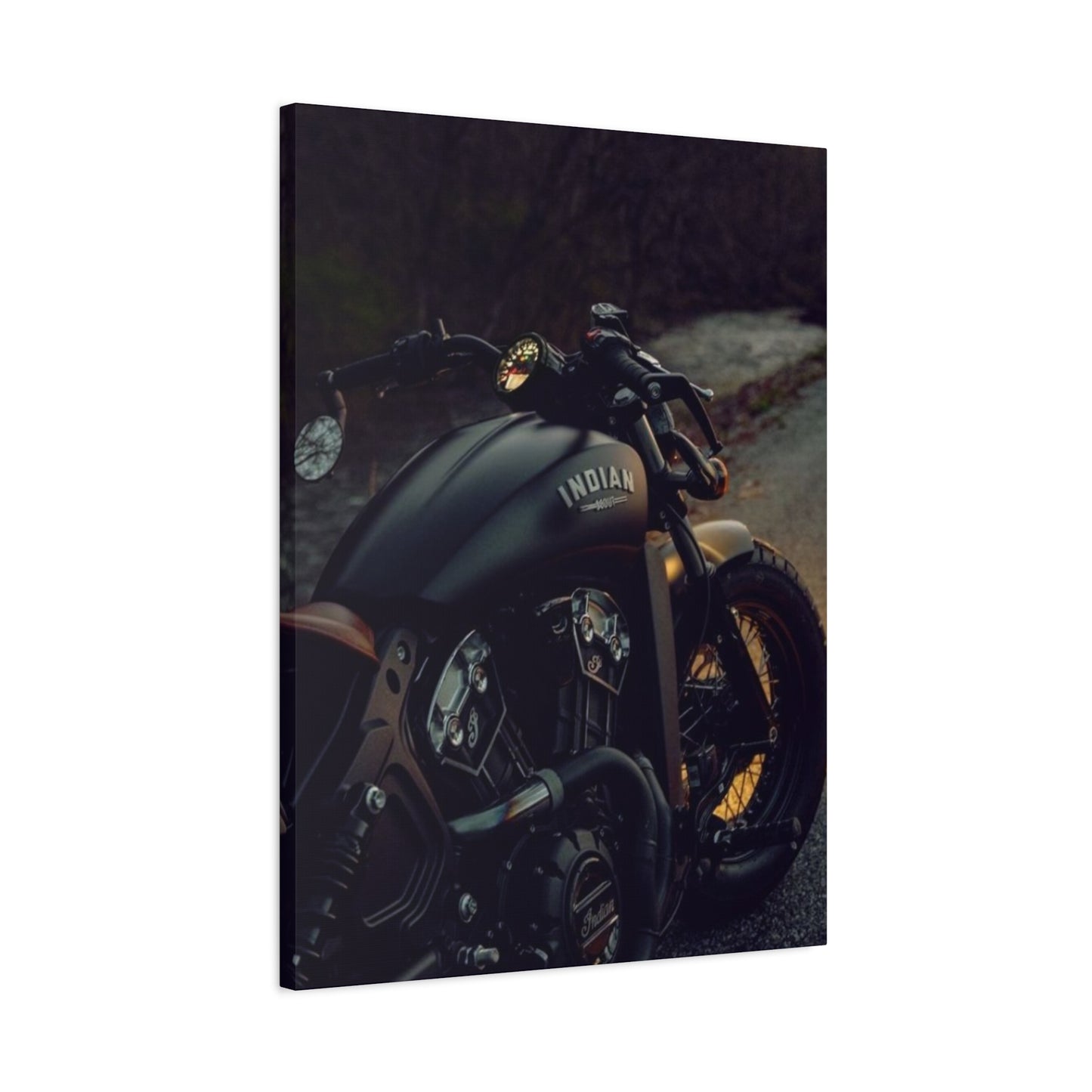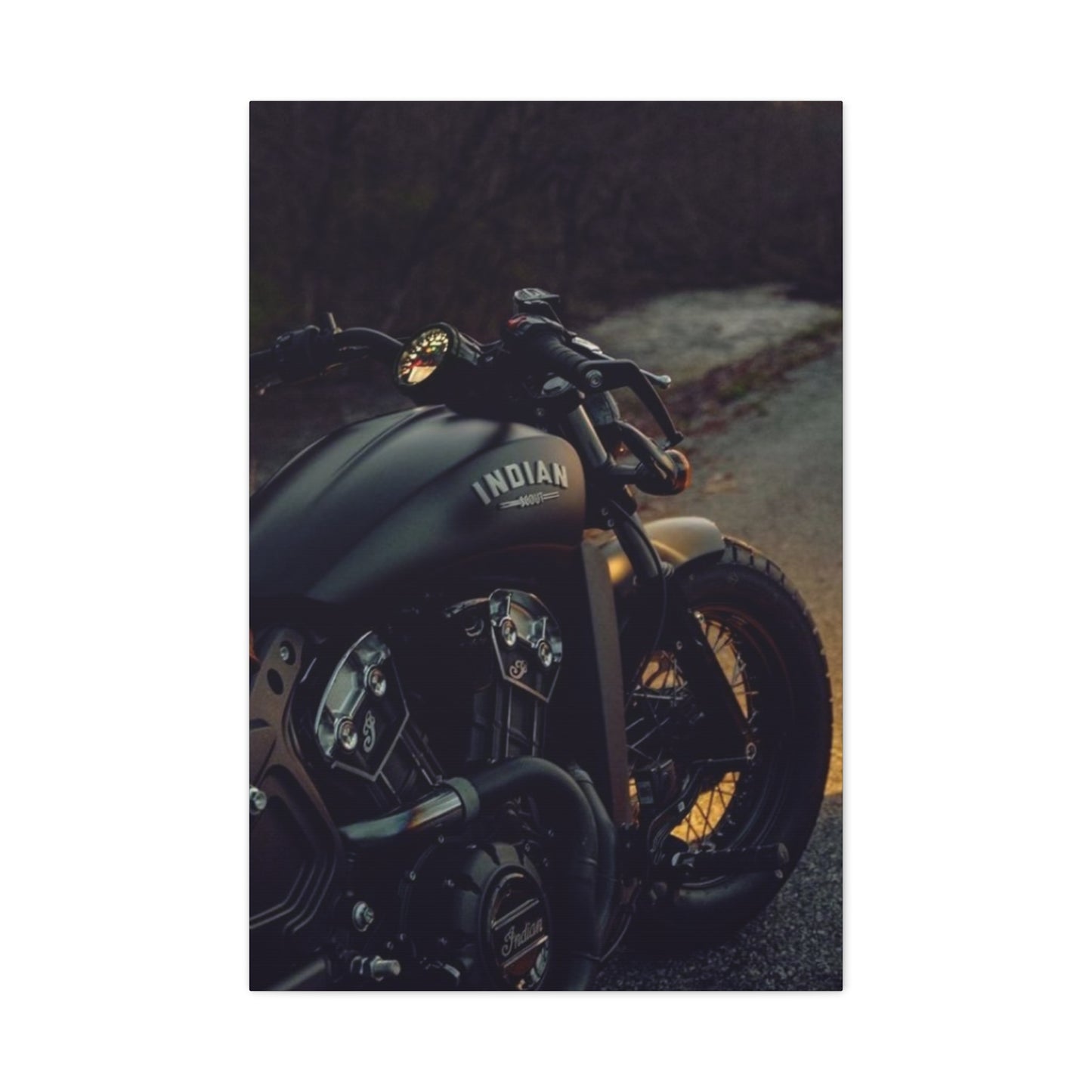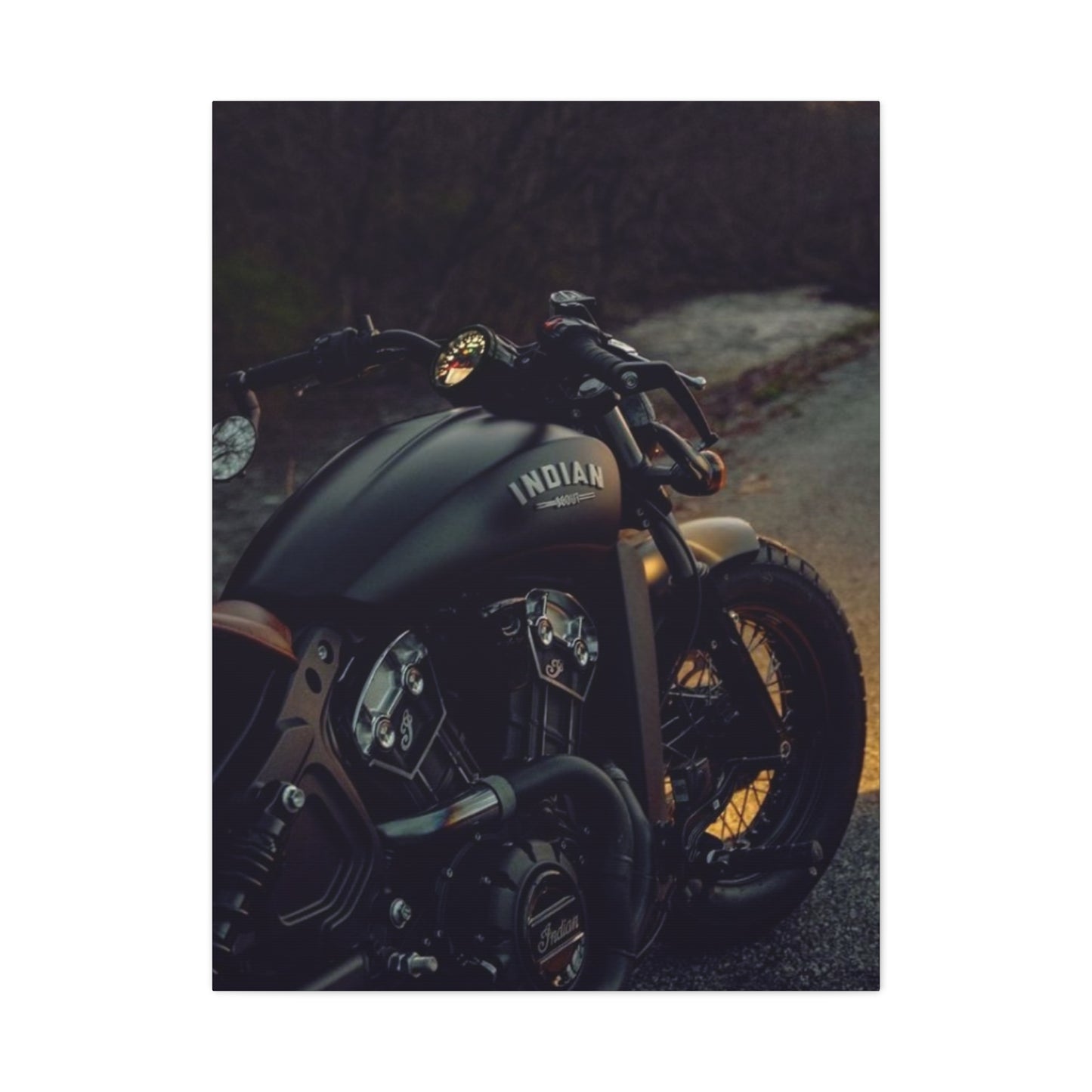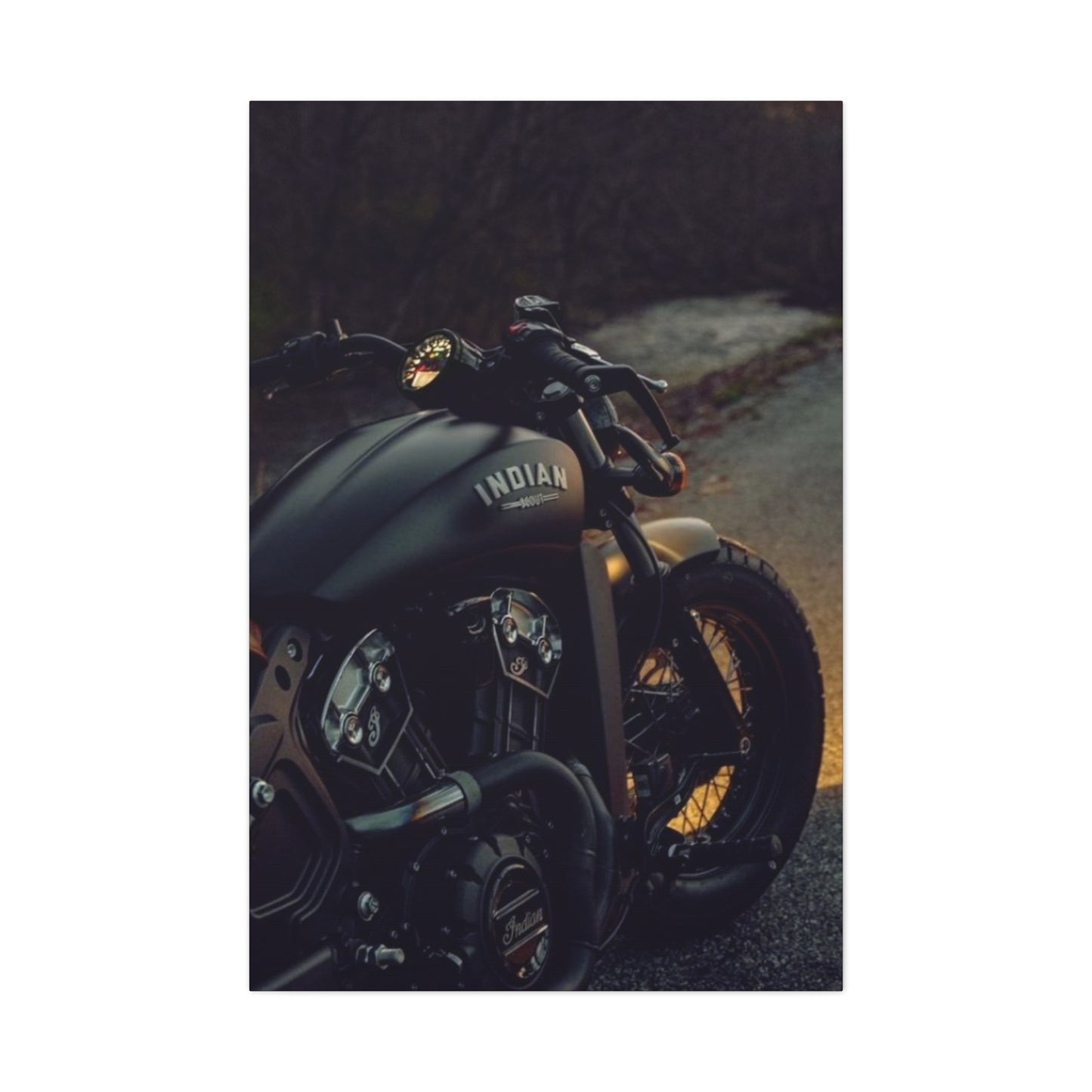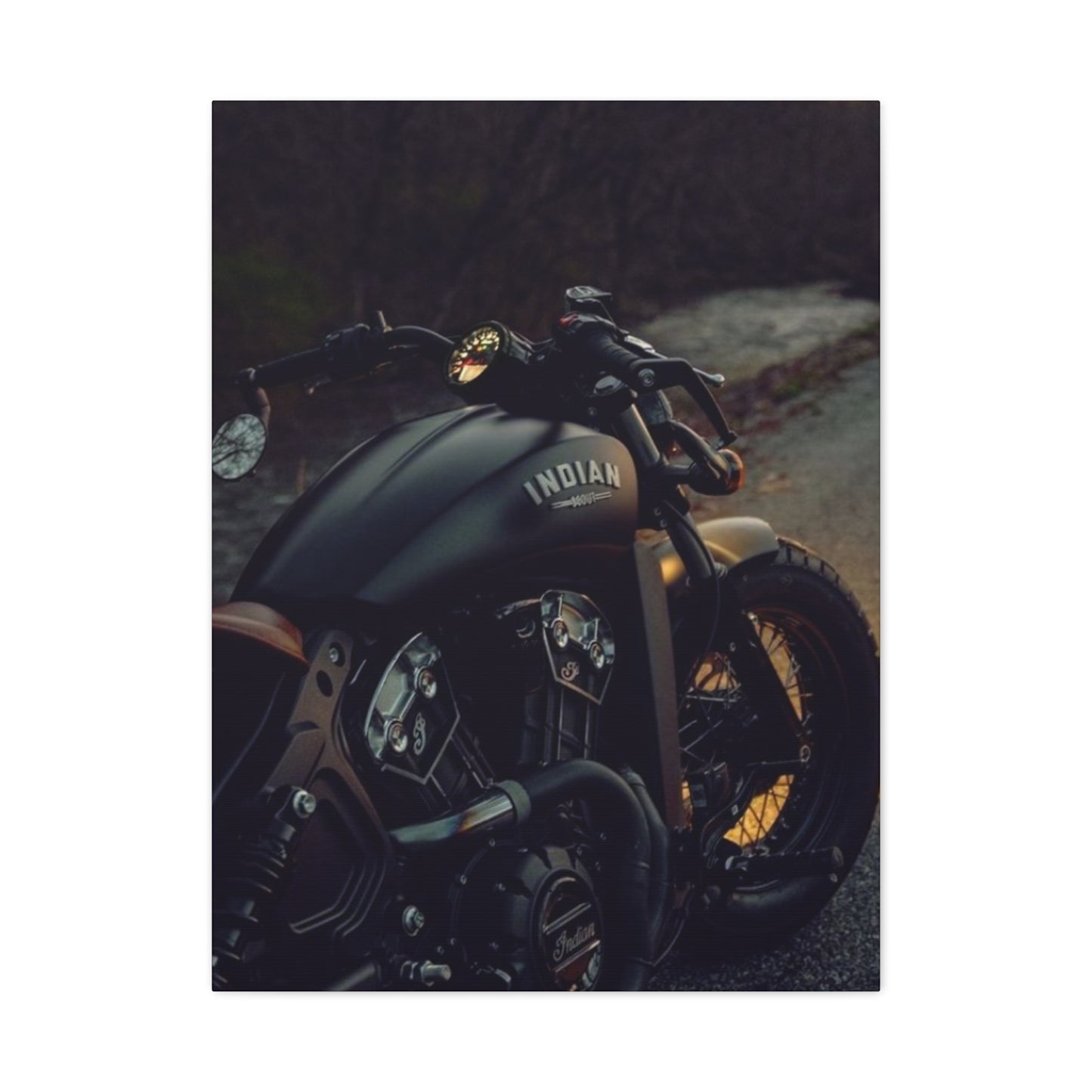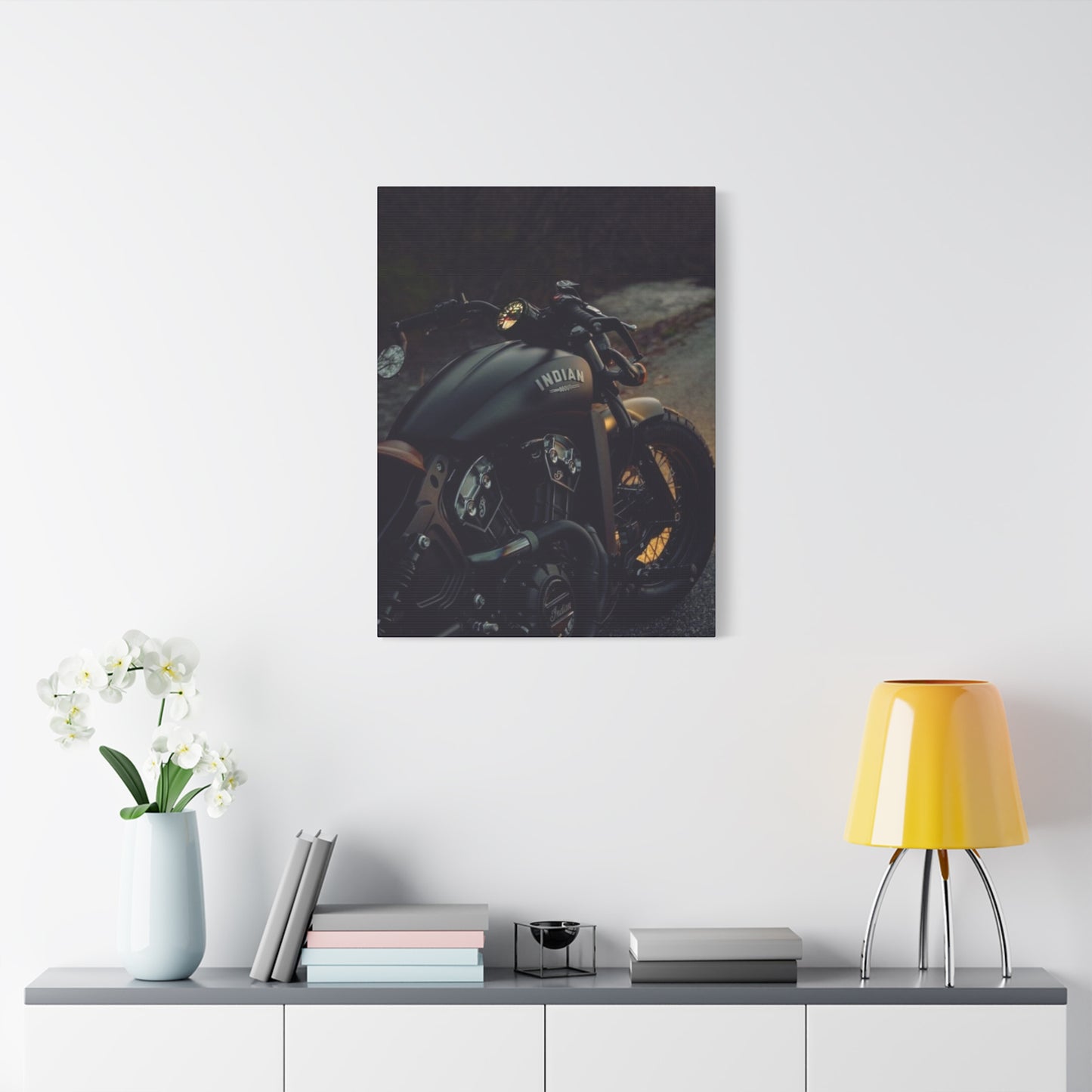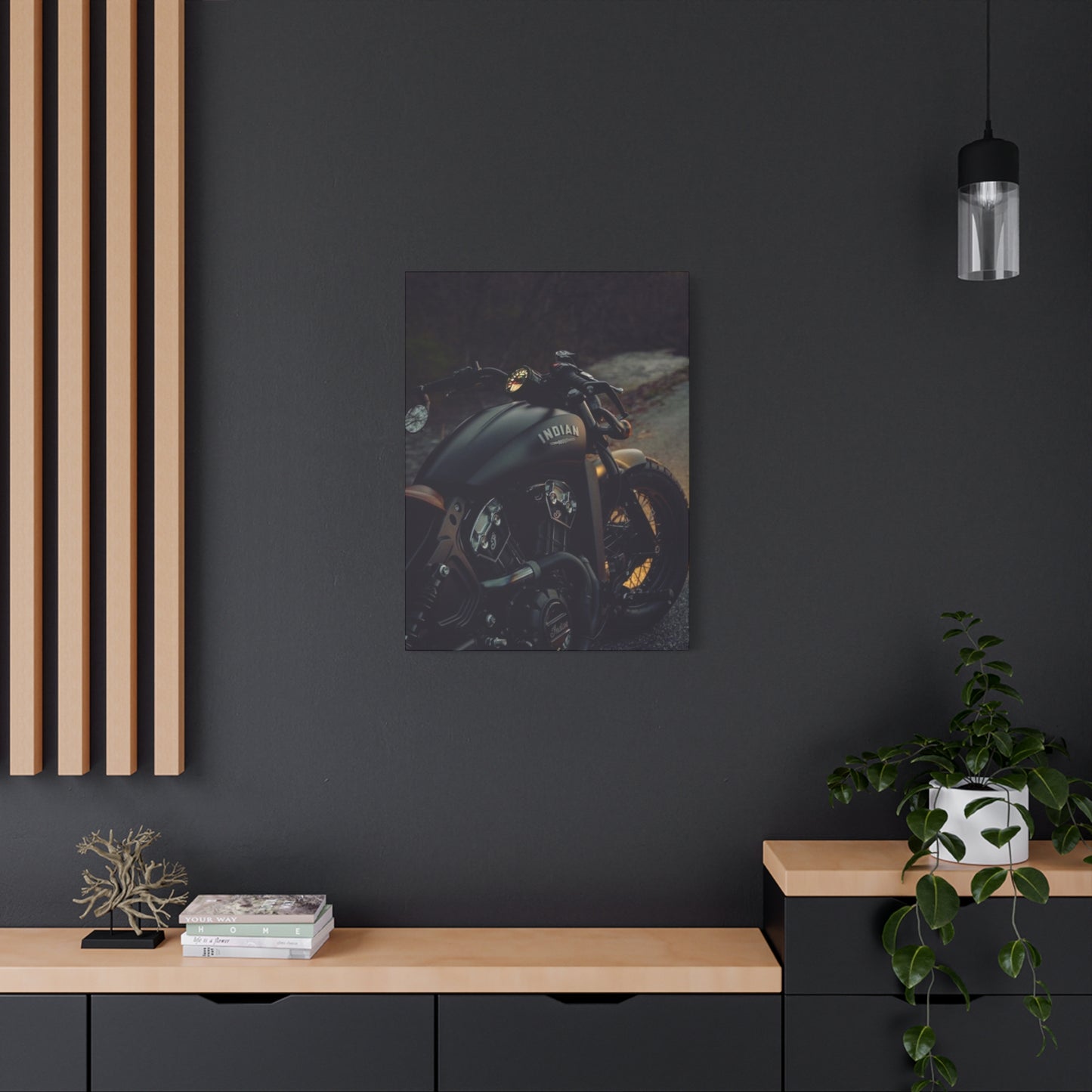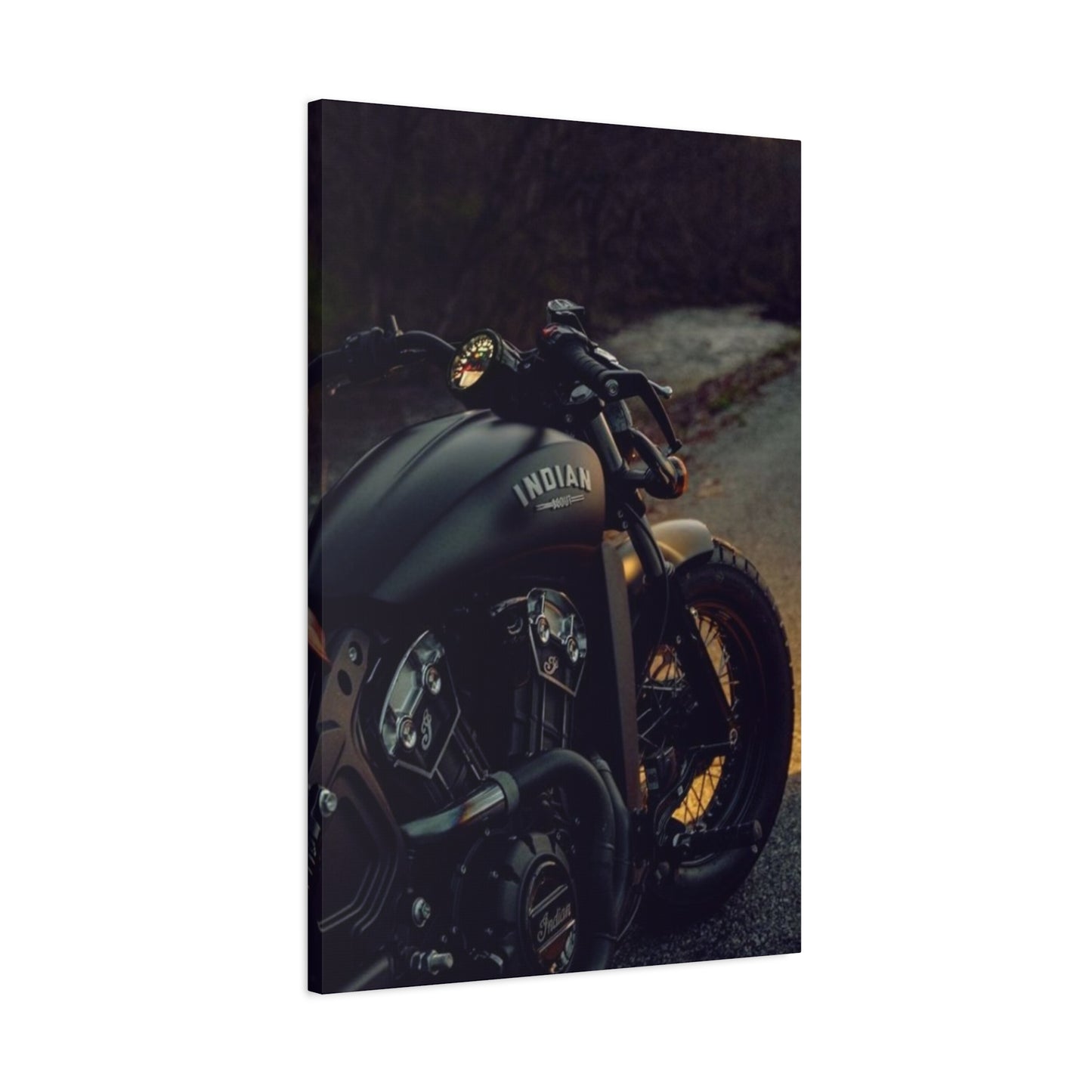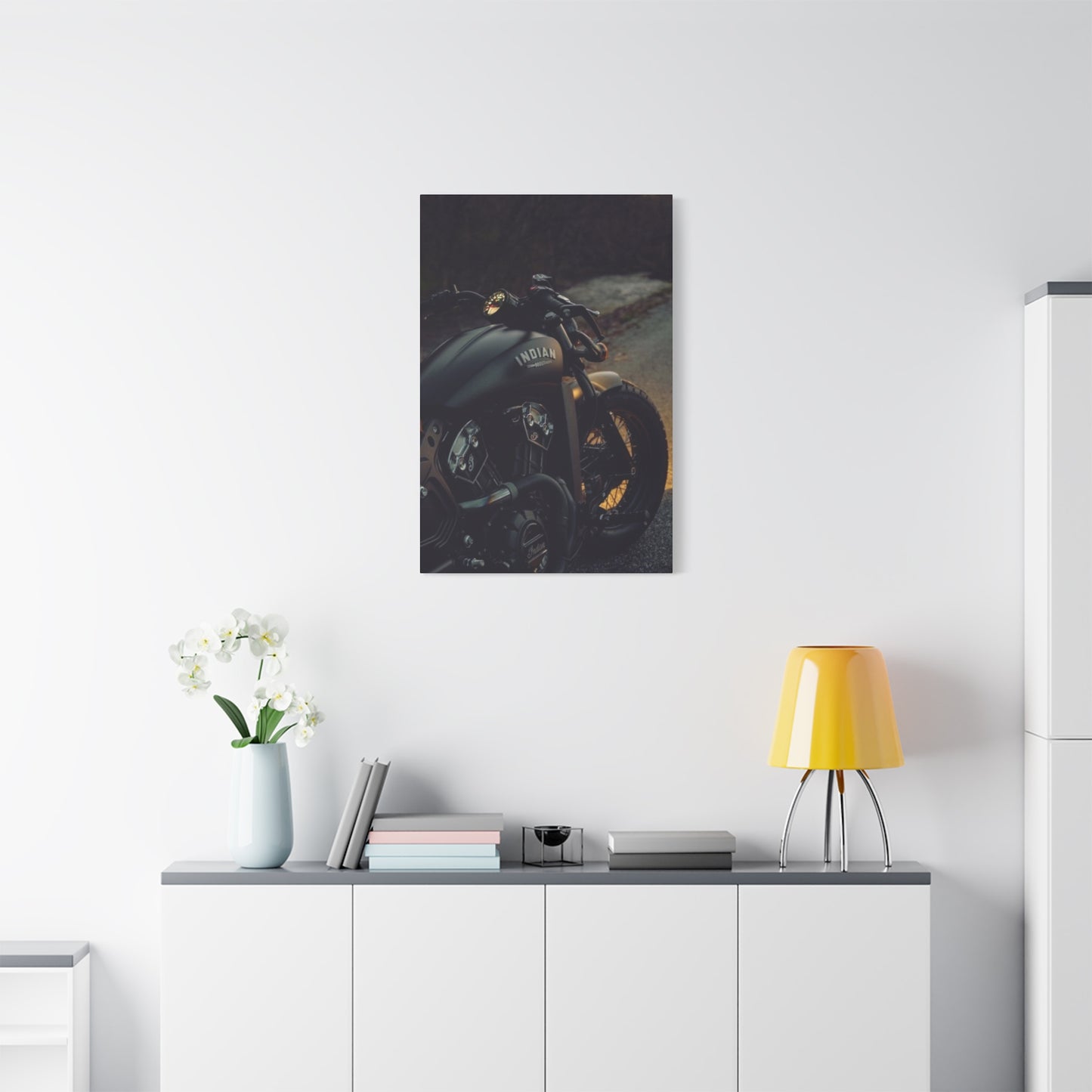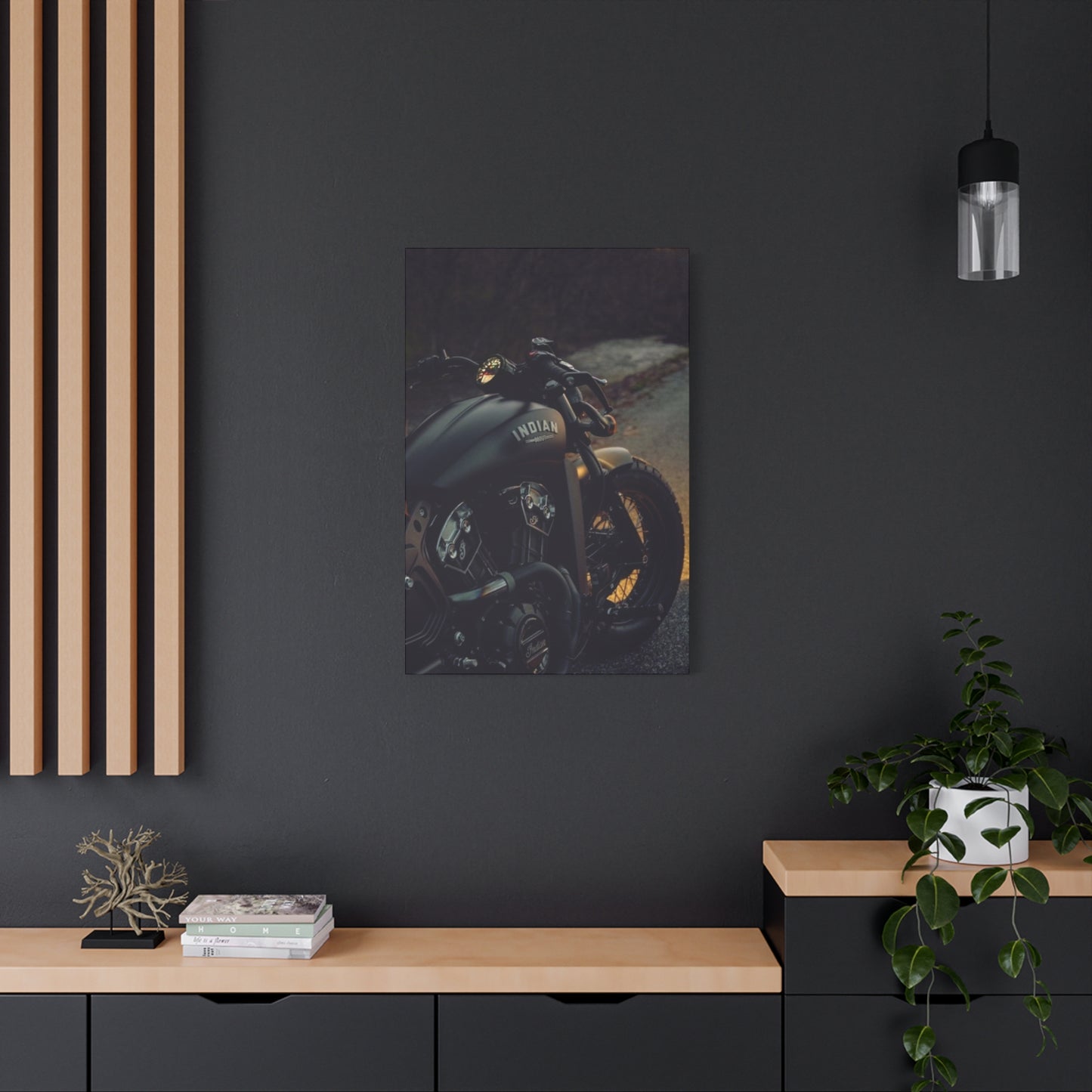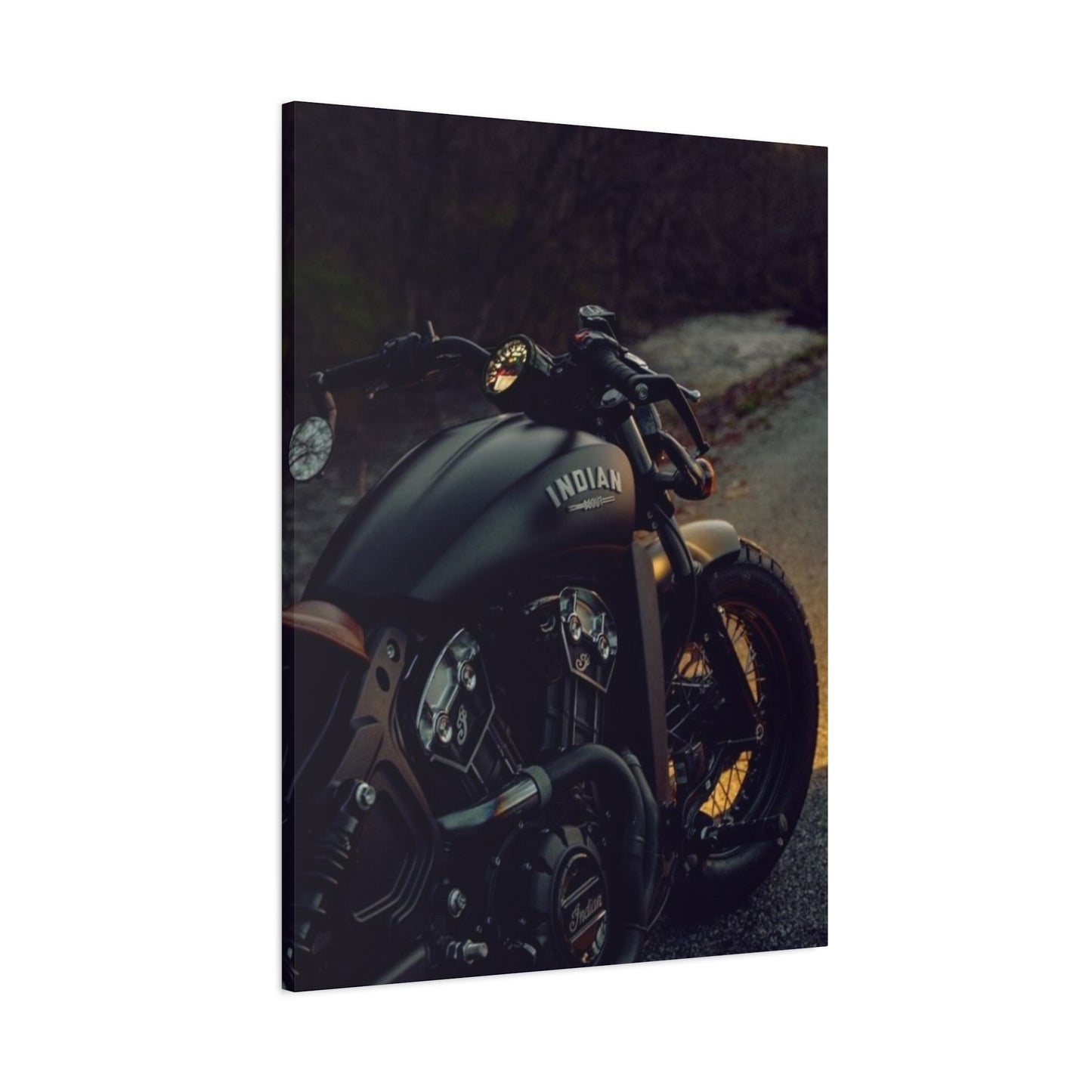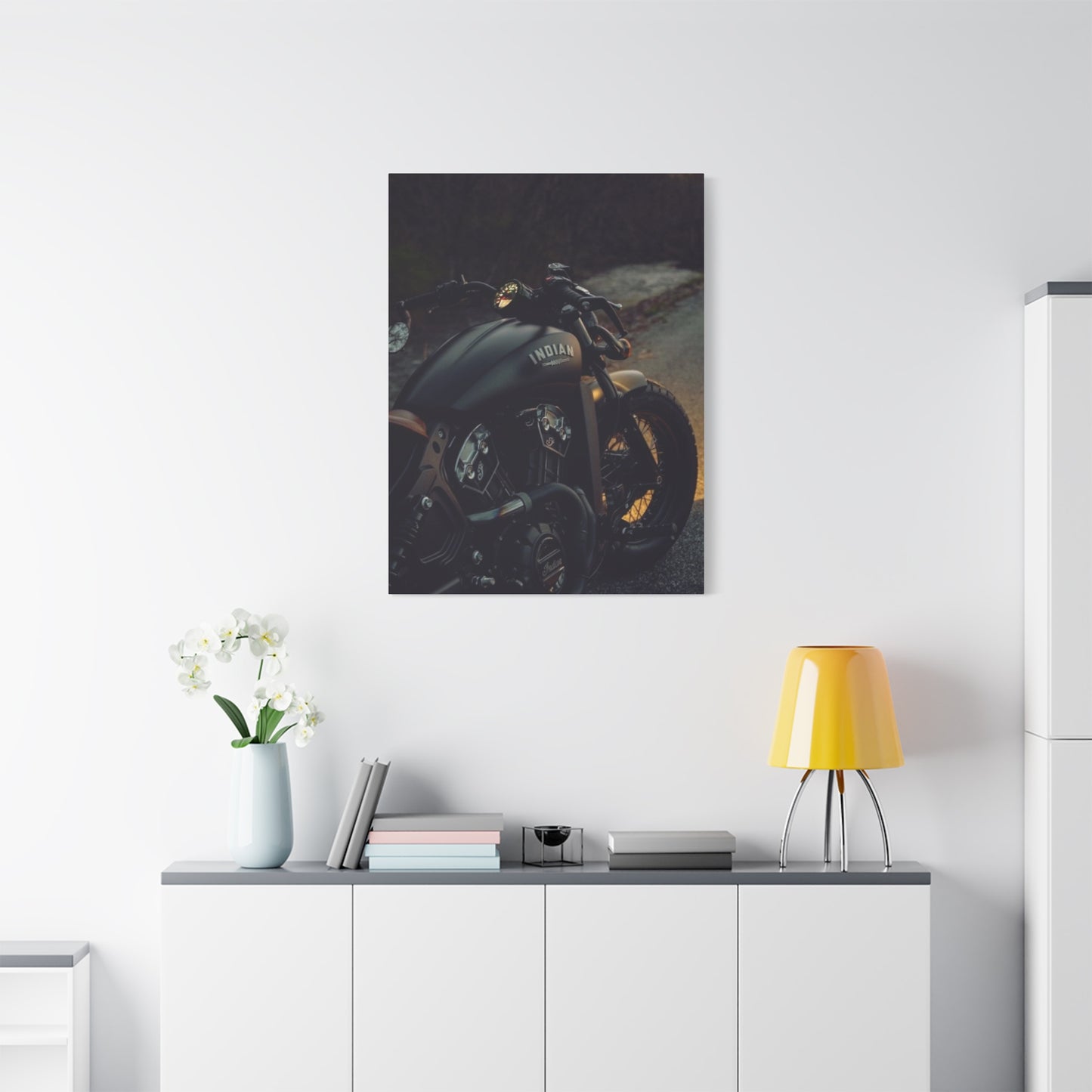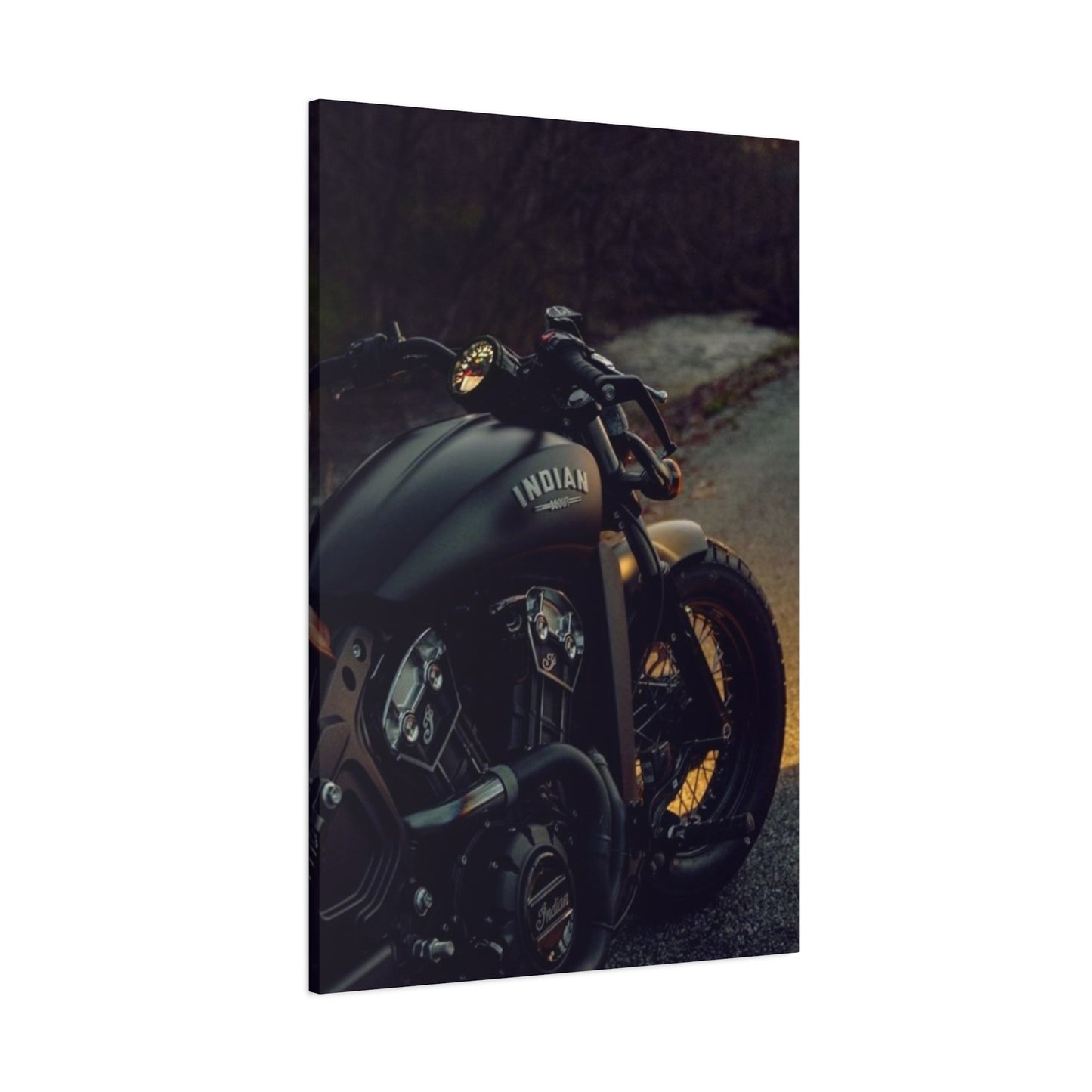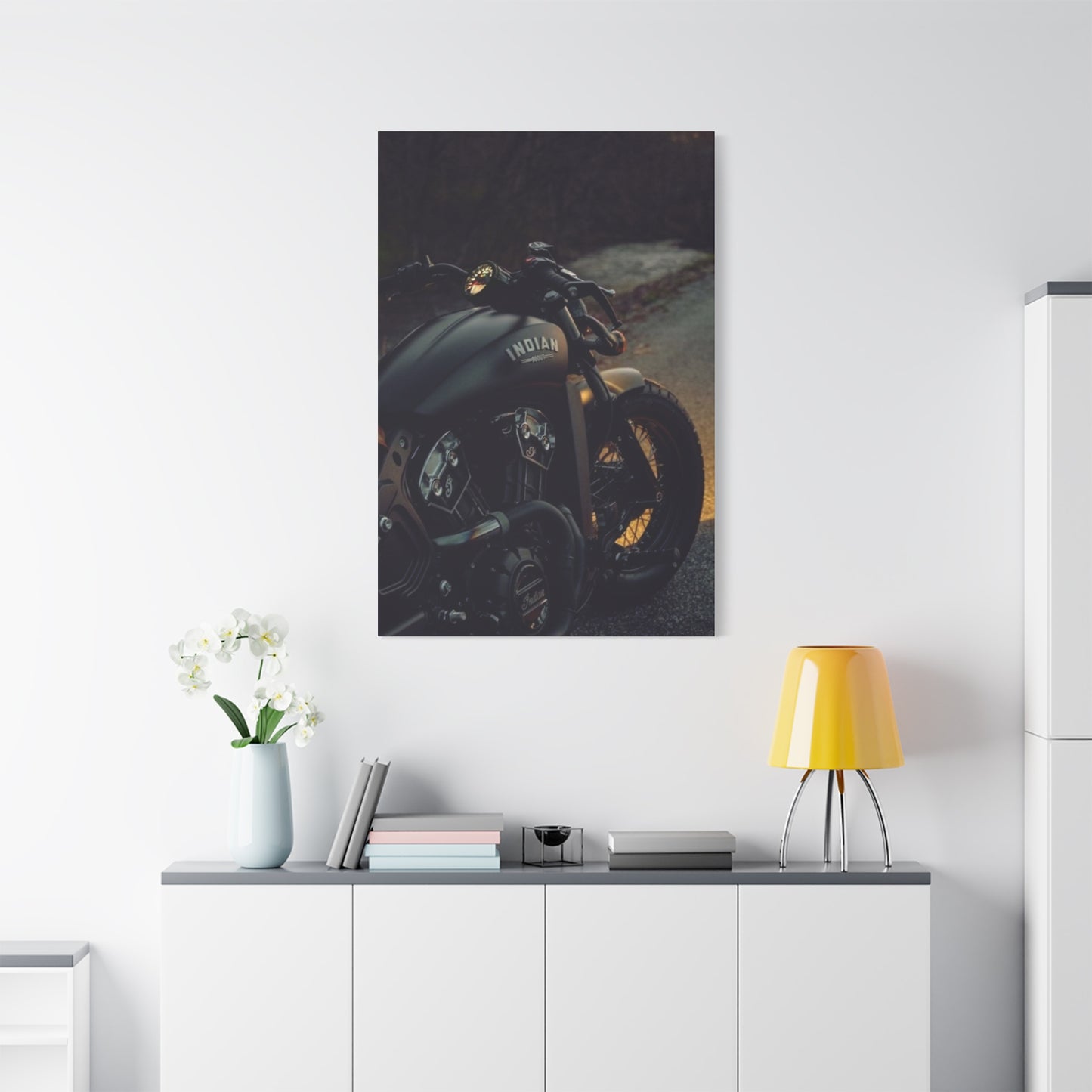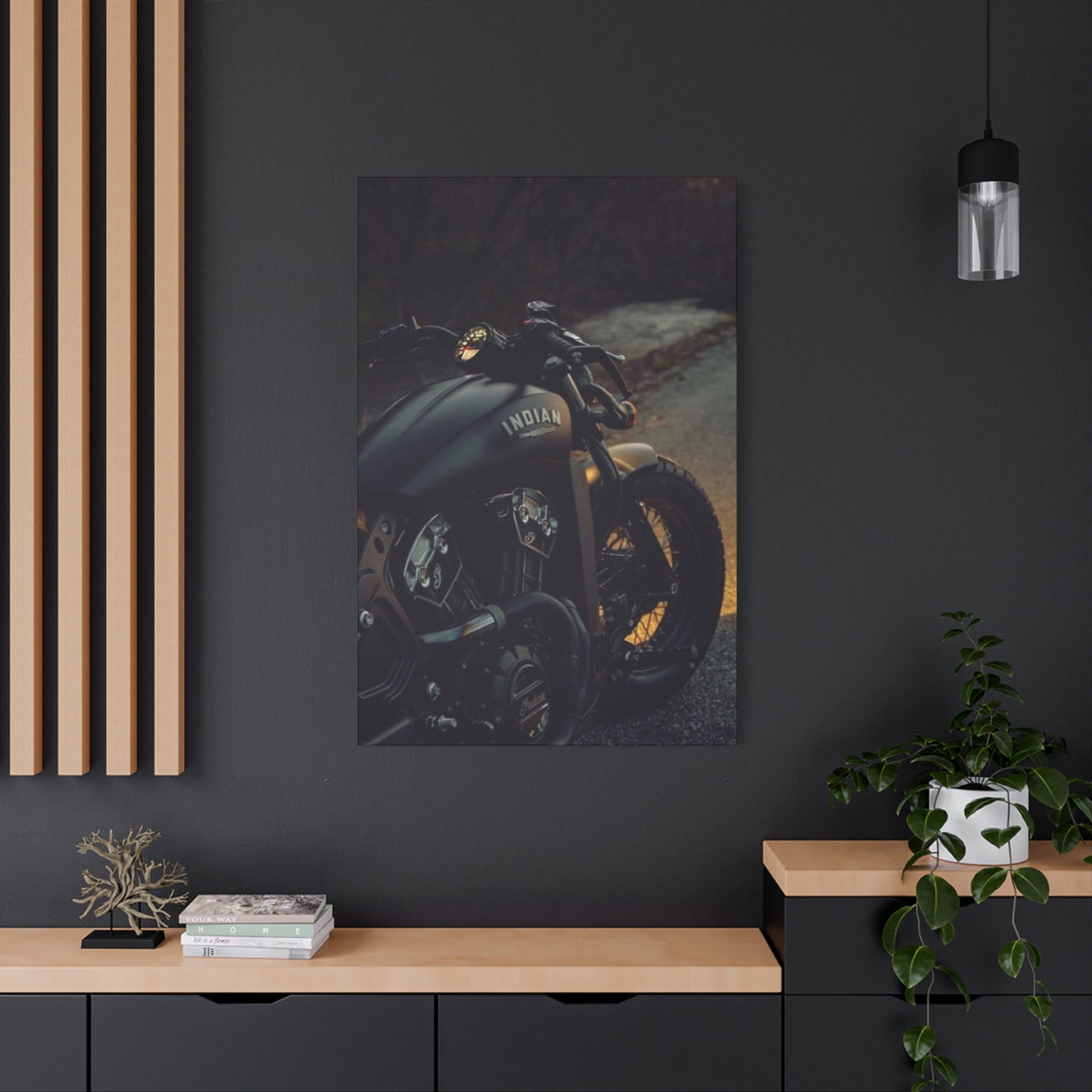Iconic Indian Motorcycle Wall Art: Celebrating American Heritage Visual Expression
Indian motorcycles represent one of America's most storied and influential contributions to the world of two-wheeled transportation. These magnificent machines, with their distinctive design elements and rich historical legacy, have transcended their utilitarian purpose to become powerful symbols of American ingenuity and craftsmanship. The visual appeal of Indian motorcycles has naturally evolved into a celebrated art form, manifesting as stunning wall decorations that capture the essence of these legendary vehicles.
The artistry surrounding Indian motorcycles encompasses far more than simple mechanical appreciation. It represents a cultural phenomenon that bridges the gap between industrial design and aesthetic beauty. From the earliest days of the company's founding in 1901, Indian motorcycles have possessed an inherent visual magnetism that has inspired artists, photographers, and enthusiasts to capture their essence through various creative mediums. This artistic interpretation has flourished into a comprehensive genre of decorative art that adorns walls in homes, offices, cafes, and galleries worldwide.
The significance of Indian motorcycle imagery extends beyond mere decoration. These visual representations serve as windows into American automotive history, preserving the memory of an era when craftsmanship and innovation went hand in hand. Each piece of Indian motorcycle artwork tells a story of engineering excellence, design evolution, and cultural impact that resonates with viewers regardless of their personal connection to motorcycles. The artistic interpretation of these machines captures not only their mechanical beauty but also the spirit of freedom, adventure, and rebellion that they have come to symbolize.
Contemporary Indian motorcycle artwork draws inspiration from multiple sources, including vintage advertisements, historical photographs, technical drawings, and artistic interpretations of the bikes themselves. Artists working in this genre demonstrate remarkable versatility, creating pieces that range from photorealistic depictions to abstract interpretations that capture the emotional essence of these iconic machines. The diversity of artistic approaches ensures that Indian motorcycle artwork appeals to a broad spectrum of tastes and preferences, making it accessible to both dedicated enthusiasts and casual admirers.
The creation of Indian motorcycle artwork involves a deep appreciation for the technical and aesthetic elements that make these machines distinctive. Artists must understand the unique design characteristics that set Indian motorcycles apart from their competitors, including the distinctive fender shapes, engine configurations, and overall proportions that give these bikes their unmistakable identity. This technical knowledge, combined with artistic skill and creative vision, results in artwork that captures both the mechanical precision and emotional appeal of these legendary machines.
The market for Indian motorcycle artwork has expanded significantly in recent years, driven by growing interest in vintage motorcycles and Americana collectibles. Collectors and enthusiasts actively seek out high-quality reproductions of vintage advertisements, original photography, and contemporary artistic interpretations that celebrate the Indian motorcycle legacy. This demand has encouraged artists and publishers to create increasingly sophisticated and detailed pieces that meet the exacting standards of discerning collectors.
The therapeutic and inspirational qualities of Indian motorcycle artwork cannot be overlooked. These visual representations often evoke powerful emotional responses in viewers, transporting them to different eras and inspiring dreams of adventure and freedom. The nostalgic appeal of vintage Indian motorcycle imagery provides a connection to simpler times when mechanical objects were crafted with pride and attention to detail. This emotional resonance makes Indian motorcycle artwork particularly effective in creating atmosphere and setting mood in various environments.
The educational value of Indian motorcycle artwork extends beyond its aesthetic appeal. These visual representations serve as historical documents that preserve important aspects of American industrial and cultural history. Through careful study of vintage advertisements, technical illustrations, and period photography, viewers can gain insights into the social and economic factors that shaped the development of the American motorcycle industry. This educational dimension adds depth and meaning to the artistic experience, making Indian motorcycle artwork valuable from both aesthetic and intellectual perspectives.
The technical aspects of creating high-quality Indian motorcycle artwork require specialized knowledge and skills. Artists working in this field must understand the principles of mechanical illustration, historical accuracy, and artistic composition. Whether working with traditional mediums like oil paint and charcoal or modern digital tools, artists must balance technical precision with creative expression to produce pieces that satisfy both accuracy requirements and aesthetic standards.
The social and cultural impact of Indian motorcycle artwork extends far beyond individual collections and personal enjoyment. These artistic representations play important roles in preserving and promoting awareness of American motorcycle heritage. Museums, historical societies, and educational institutions use Indian motorcycle artwork to illustrate important periods in American industrial development and to engage younger generations with this important aspect of their cultural heritage.
Indian Motorcycles as Artistic Homage to American Manufacturing Excellence
The artistic celebration of Indian motorcycles represents a profound tribute to the exceptional manufacturing standards and innovative engineering that defined American industry during the early twentieth century. These mechanical marvels, born from the vision and dedication of George Hendee and Oscar Hedstrom, embodied the pioneering spirit that drove American manufacturing to unprecedented heights of achievement. The transformation of these functional machines into subjects of artistic expression reflects a deep appreciation for the craftsmanship and attention to detail that characterized American manufacturing during its golden age.
The manufacturing philosophy that guided Indian Motorcycle Company emphasized quality over quantity, resulting in machines that were built to last and perform under the most demanding conditions. This commitment to excellence is evident in every aspect of Indian motorcycle design, from the precision-machined engine components to the carefully crafted bodywork that gave each model its distinctive appearance. Artists who choose to depict Indian motorcycles in their work are celebrating not just the visual appeal of these machines, but the entire manufacturing ethos that brought them into existence.
The artistic interpretation of Indian motorcycles often focuses on the mechanical details that showcase the sophisticated engineering solutions developed by the company's talented designers and engineers. These visual elements, including the distinctive powerplant configurations, innovative suspension systems, and carefully proportioned chassis designs, provide rich source material for artists seeking to capture the essence of American mechanical ingenuity. The complexity and elegance of these engineering solutions offer endless possibilities for artistic exploration and creative interpretation.
Contemporary artists working with Indian motorcycle themes frequently draw inspiration from the historical context surrounding these machines, incorporating elements that reflect the social and economic conditions that shaped their development. This approach results in artwork that functions as both aesthetic expression and historical commentary, providing viewers with insights into the challenges and opportunities that faced American manufacturers during the early decades of the twentieth century. The artistic treatment of these themes helps preserve important aspects of American industrial heritage while making them accessible to contemporary audiences.
The collaborative relationship between form and function that characterized Indian motorcycle design provides artists with exceptional opportunities to explore the intersection of aesthetic beauty and mechanical purpose. Unlike purely decorative objects, motorcycles must satisfy demanding functional requirements while maintaining visual appeal. This dual nature creates artistic challenges that inspire creative solutions and innovative approaches to visual representation. Artists working in this field must balance technical accuracy with aesthetic considerations to create pieces that honor both the mechanical and visual aspects of their subjects.
The global recognition of Indian motorcycles as symbols of American manufacturing excellence has contributed to the international appeal of related artwork. Collectors and enthusiasts worldwide seek out high-quality artistic representations of these iconic machines, creating a vibrant market for both vintage and contemporary pieces. This international interest has encouraged artists from diverse cultural backgrounds to explore Indian motorcycle themes, resulting in a rich variety of interpretations that reflect different artistic traditions and perspectives.
The preservation of manufacturing techniques and design philosophies through artistic representation serves important educational and cultural functions. As traditional manufacturing methods give way to modern production techniques, artwork depicting Indian motorcycles helps maintain awareness of the skills and knowledge that made these exceptional machines possible. This preservation function extends beyond mere nostalgia to encompass practical considerations related to restoration, maintenance, and continued appreciation of these mechanical achievements.
The influence of Indian motorcycle design on contemporary manufacturing and design practices can be observed in various industries beyond motorcycle production. The emphasis on quality, attention to detail, and integration of form and function that characterized Indian motorcycles continues to inspire modern designers and engineers working in fields ranging from automotive design to consumer products. Artistic representations of these machines serve as visual reminders of these enduring design principles and their continued relevance in contemporary manufacturing.
The cultural significance of Indian motorcycles as symbols of American achievement extends beyond their mechanical attributes to encompass broader themes related to innovation, entrepreneurship, and national identity. Artists working with these themes often explore connections between individual mechanical objects and larger cultural narratives, creating pieces that function as commentary on American values and aspirations. This approach adds depth and meaning to the artistic experience while connecting contemporary viewers with important aspects of their cultural heritage.
The technical challenges associated with accurately depicting Indian motorcycles in artistic form require artists to develop specialized knowledge and skills. Understanding the proportions, materials, and manufacturing techniques used in these machines is essential for creating convincing and authentic representations. This technical knowledge must be combined with artistic sensitivity and creative vision to produce pieces that satisfy both accuracy requirements and aesthetic standards.
The emotional resonance of Indian motorcycles as subjects of artistic expression derives partly from their association with personal freedom, adventure, and individual achievement. These themes, deeply embedded in American cultural consciousness, provide powerful source material for artists seeking to create pieces that connect with viewers on emotional levels. The artistic treatment of these themes helps maintain their relevance and appeal across different generations and cultural contexts.
The documentation function served by Indian motorcycle artwork extends beyond aesthetic considerations to encompass practical applications related to historical research, restoration projects, and educational programs. High-quality artistic representations provide valuable reference materials for scholars, restorers, and enthusiasts seeking to understand and preserve these important mechanical artifacts. This documentation function adds practical value to artistic expression while supporting broader preservation efforts.
Harmonizing Contemporary and Traditional Elements in Indian Motorcycle Visual Art
The artistic representation of Indian motorcycles presents unique opportunities for exploring the dynamic relationship between contemporary artistic sensibilities and traditional design aesthetics. Modern artists working with Indian motorcycle themes must navigate the challenge of honoring historical authenticity while incorporating contemporary artistic techniques and perspectives. This creative tension often produces the most compelling and successful pieces, as artists find innovative ways to bridge temporal and stylistic gaps while maintaining respect for their subject matter.
Contemporary artistic approaches to Indian motorcycle representation often involve the integration of modern materials, techniques, and technologies with traditional subject matter and composition principles. Digital art tools, for example, allow artists to achieve levels of detail and precision that would be difficult or impossible to accomplish using traditional mediums alone. However, the most successful contemporary pieces typically combine these technical advantages with deep understanding and appreciation of classical artistic principles and historical context.
The challenge of creating visually compelling Indian motorcycle artwork that appeals to both traditional enthusiasts and contemporary art collectors requires careful consideration of multiple aesthetic factors. Artists must balance historical accuracy with creative interpretation, technical precision with artistic expression, and nostalgic appeal with contemporary relevance. This multifaceted approach often results in pieces that function effectively in diverse contexts, from traditional motorcycle museums to contemporary art galleries.
The evolution of artistic styles and techniques over the decades since Indian motorcycles first captured public imagination provides rich source material for contemporary artists exploring this theme. Early twentieth-century advertising art, mid-century photography, and contemporary digital art each offer different approaches to visual representation that can be studied, adapted, and reinterpreted for modern audiences. This historical perspective allows contemporary artists to create pieces that acknowledge and celebrate the full spectrum of Indian motorcycle artistic heritage.
The integration of modern design principles with traditional Indian motorcycle aesthetics often involves careful analysis of color relationships, compositional structures, and visual hierarchies that characterize both historical and contemporary art. Successful pieces typically demonstrate sophisticated understanding of how these elements can be combined to create cohesive and impactful visual statements. The resulting artwork often exhibits qualities that make it accessible to viewers with varying levels of familiarity with either motorcycle culture or contemporary art.
The technological capabilities available to contemporary artists working with Indian motorcycle themes offer unprecedented opportunities for creative expression and technical achievement. High-resolution photography, advanced printing techniques, and digital manipulation tools allow artists to create pieces with extraordinary detail, color accuracy, and visual impact. However, the most successful contemporary pieces typically use these technical capabilities in service of clear artistic vision rather than as ends in themselves.
The market for contemporary Indian motorcycle artwork reflects broader trends in both motorcycle culture and contemporary art collecting. Younger collectors often seek pieces that combine traditional subject matter with contemporary artistic approaches, while traditional enthusiasts may prefer pieces that emphasize historical accuracy and nostalgic appeal. Successful artists working in this field often develop the ability to create pieces that satisfy both market segments while maintaining their own artistic integrity and vision.
The educational opportunities presented by the intersection of traditional and contemporary approaches to Indian motorcycle art extend beyond aesthetic considerations to encompass technical, historical, and cultural dimensions. Contemporary artists often research historical manufacturing techniques, period design aesthetics, and cultural contexts to inform their creative process. This research component adds depth and authenticity to their work while contributing to broader understanding and appreciation of Indian motorcycle heritage.
The collaborative possibilities inherent in contemporary Indian motorcycle art projects often involve partnerships between artists, historians, collectors, and technical specialists. These collaborations can result in pieces that combine multiple forms of expertise and perspective, creating artwork that might not be possible through individual effort alone. Such collaborative approaches also help ensure that contemporary artistic interpretations maintain appropriate respect for historical accuracy and cultural significance.
The influence of contemporary art movements and trends on Indian motorcycle artwork reflects the ongoing vitality and relevance of these themes in contemporary culture. Abstract expressionism, pop art, photorealism, and other artistic movements have all contributed techniques and perspectives that enrich the visual vocabulary available to artists working with Indian motorcycle subjects. This cross-pollination between different artistic traditions helps maintain the freshness and contemporary relevance of Indian motorcycle artwork.
The preservation of traditional artistic techniques and approaches through their application to Indian motorcycle subjects serves important cultural and educational functions. Many contemporary artists working in this field actively study and employ traditional mediums such as oil painting, watercolor, and printmaking. This commitment to traditional techniques helps maintain these skills while demonstrating their continued relevance and effectiveness in contemporary artistic practice.
The global perspective brought to bear on Indian motorcycle artwork by contemporary international artists adds new dimensions and interpretations to these traditionally American themes. Artists from different cultural backgrounds often bring fresh perspectives and alternative approaches that enrich the overall body of Indian motorcycle artwork while demonstrating the universal appeal of these iconic machines.
The experimental nature of much contemporary art provides opportunities for innovative approaches to Indian motorcycle representation that might not have been considered or possible in earlier eras. Mixed media pieces, installation art, and interactive presentations offer new ways to engage audiences with Indian motorcycle themes while expanding the boundaries of what constitutes Indian motorcycle artwork.
The critical reception of contemporary Indian motorcycle artwork by both art critics and motorcycle enthusiasts provides valuable feedback that helps artists refine their approaches and develop more effective ways to communicate their artistic vision. This critical dialogue contributes to the ongoing evolution and improvement of artistic standards while maintaining appropriate respect for both artistic and cultural considerations.
Influence of Indian Motorcycle Competition Heritage on Artistic Expression
The rich racing heritage of Indian motorcycles provides a compelling foundation for artistic exploration that captures both the mechanical excellence and competitive spirit that defined the brand's involvement in motorcycle racing. From the earliest board track racing competitions to modern vintage racing events, Indian motorcycles have demonstrated exceptional performance capabilities that continue to inspire artists seeking to convey themes of speed, competition, and mechanical achievement through their visual creations.
The visual drama inherent in motorcycle racing provides artists with dynamic subject matter that lends itself naturally to exciting and engaging artistic treatment. The combination of high-speed action, mechanical precision, and human courage that characterizes motorcycle racing creates opportunities for artwork that captures both literal and metaphorical aspects of competition. Artists working with Indian motorcycle racing themes often focus on the tension between control and chaos that defines competitive motorcycling, creating pieces that convey the excitement and danger of racing while celebrating the mechanical excellence that makes such performance possible.
Historical racing imagery associated with Indian motorcycles offers rich source material for contemporary artists seeking to capture the golden age of American motorcycle competition. Vintage photographs from famous racing venues such as Daytona Beach, the Indianapolis Motor Speedway, and various board track facilities provide authentic documentation of Indian motorcycles in competitive action. These historical images serve as valuable reference materials while also inspiring creative interpretations that explore the cultural and social significance of motorcycle racing in American society.
The technical aspects of racing motorcycles present unique artistic challenges that require understanding of both mechanical principles and visual composition. Racing-prepared Indian motorcycles often featured specialized components, modified bodywork, and distinctive color schemes that set them apart from standard production models. Artists working with racing themes must understand these technical differences while finding ways to convey the performance-oriented nature of racing machines through their artistic choices.
The human element in motorcycle racing provides additional layers of meaning and emotional resonance for artistic interpretation. The relationships between riders and their machines, the teamwork required for successful racing campaigns, and the personal courage demanded by competitive motorcycling all offer rich themes for artistic exploration. Successful pieces often capture not just the mechanical aspects of racing motorcycles but also the human stories and emotional dimensions that give racing its broader cultural significance.
The evolution of Indian motorcycle racing technology over the decades provides opportunities for artistic exploration of themes related to technological progress, innovation, and adaptation. Early racing Indians featured relatively simple mechanical systems, while later competition machines incorporated increasingly sophisticated engineering solutions. This technological evolution can be documented and celebrated through artistic representations that highlight the continuous improvement and refinement that characterized Indian motorcycle development.
The cultural impact of Indian motorcycle racing success extends beyond the immediate realm of motorcycle enthusiasts to encompass broader themes related to American achievement and national pride. During periods when Indian motorcycles dominated various forms of competition, their success served as symbols of American technological and manufacturing superiority. Artists working with these themes often explore connections between individual mechanical achievements and larger cultural narratives about American identity and values.
The aesthetic elements that distinguish racing motorcycles from their street-oriented counterparts provide distinctive visual characteristics that can be emphasized and celebrated through artistic interpretation. Racing numbers, sponsor decals, specialized equipment, and performance modifications all contribute to the unique visual identity of competition machines. These elements can be incorporated into artistic compositions in ways that emphasize their functional purpose while contributing to overall visual impact.
The documentation function served by artwork depicting Indian motorcycle racing activities helps preserve important aspects of American motorsports heritage that might otherwise be forgotten or overlooked. Many racing events, venues, and personalities from the early days of motorcycle competition are now known primarily through photographic and artistic documentation. High-quality artistic interpretations of these historical subjects help maintain awareness and appreciation of this important cultural heritage.
The international dimension of Indian motorcycle racing success provides opportunities for artistic exploration of themes related to cultural exchange and global competition. Indian motorcycles achieved significant success in international racing competitions, demonstrating American engineering capability on the world stage. Artists working with these themes often explore the cultural and diplomatic dimensions of international sporting competition while celebrating the mechanical achievements that made such success possible.
The technical innovation driven by racing competition has contributed significantly to the overall development of Indian motorcycle technology. Performance improvements developed for racing applications often found their way into production motorcycles, benefiting the entire Indian motorcycle community. This technology transfer process provides rich material for artistic interpretation that explores connections between competition and innovation while celebrating the practical benefits of racing development.
The emotional intensity associated with motorcycle racing provides powerful source material for artists seeking to create pieces that connect with viewers on visceral levels. The excitement, tension, and drama that characterize competitive motorcycling can be conveyed through artistic techniques that emphasize movement, energy, and dynamic interaction. Successful racing-themed artwork often captures these emotional qualities while maintaining appropriate respect for the serious nature of competitive motorcycling.
The community aspects of motorcycle racing, including the relationships between competitors, mechanics, sponsors, and spectators, offer additional themes for artistic exploration. The collaborative nature of successful racing campaigns and the shared passion that unites racing communities provide rich material for artwork that explores social and cultural dimensions of motorcycle competition. These community themes help broaden the appeal of racing-themed artwork beyond dedicated racing enthusiasts.
The legacy of Indian motorcycle racing achievement continues to influence contemporary motorcycle culture and provides ongoing inspiration for artistic interpretation. Modern vintage racing events, restoration projects, and historical celebrations all contribute to maintaining awareness and appreciation of Indian racing heritage. Artists working with contemporary racing themes often draw connections between historical achievements and current activities while exploring themes related to tradition, continuity, and cultural preservation.
Personalizing Professional Environments with Indian Motorcycle Artistic Elements
The integration of Indian motorcycle artwork into professional environments requires careful consideration of multiple factors including aesthetic compatibility, cultural appropriateness, and the specific functional requirements of different types of work settings. When thoughtfully selected and properly displayed, Indian motorcycle artwork can contribute significantly to creating professional environments that reflect personal interests and values while maintaining appropriate levels of formality and professionalism.
The selection process for Indian motorcycle artwork intended for professional display must balance personal preferences with considerations related to workplace culture, client expectations, and the specific nature of the business or professional activity. Conservative professional environments may require more subtle approaches to incorporating motorcycle-themed artwork, while creative industries or businesses with strong connections to American manufacturing heritage may provide greater flexibility for displaying bold and distinctive pieces.
The psychological benefits of personalizing professional environments with meaningful artwork extend beyond mere aesthetic enhancement to encompass improved mood, increased motivation, and stronger personal identification with the work environment. Indian motorcycle artwork, with its associations of craftsmanship, innovation, and achievement, can serve as daily inspiration while providing conversation starters that help build relationships with colleagues and clients who share similar interests or appreciation for American manufacturing heritage.
The scale and placement considerations for Indian motorcycle artwork in professional settings require careful analysis of available wall areas, lighting conditions, and viewing distances. Large-scale pieces can serve as dramatic focal points in reception areas or conference rooms, while smaller pieces may be more appropriate for individual offices or personal workspace areas. The relationship between artwork size and room dimensions must be carefully considered to ensure proper visual balance and professional appearance.
The framing and presentation options for Indian motorcycle artwork in professional environments should emphasize quality and permanence while complementing the overall aesthetic of the surrounding environment. Professional-grade framing materials and techniques not only enhance the visual impact of the artwork but also demonstrate respect for both the artistic content and the professional setting. The choice of frame styles, matting options, and mounting techniques should support rather than distract from the artistic content while maintaining consistency with other decorative elements in the environment.
The lighting considerations for displaying Indian motorcycle artwork in professional settings require attention to both technical and aesthetic factors. Proper illumination enhances the visual impact of the artwork while protecting it from potential damage caused by excessive or inappropriate lighting. The integration of artwork lighting with existing architectural lighting systems should be planned to ensure consistent and appropriate illumination levels throughout the work day.
The cultural and social implications of displaying Indian motorcycle artwork in professional environments can have significant impact on relationships with colleagues, clients, and business partners. Artwork that celebrates American manufacturing heritage and craftsmanship often generates positive responses from viewers who share appreciation for these values. However, the selection and presentation of such artwork should be done with sensitivity to diverse cultural perspectives and potential interpretations.
The maintenance and preservation requirements for Indian motorcycle artwork in professional environments must be considered during the selection and installation process. Professional environments often experience higher traffic levels and more varied environmental conditions than residential settings, requiring artwork that can withstand these conditions while maintaining its appearance and value. The selection of appropriate mediums, protective measures, and maintenance schedules helps ensure long-term satisfaction with artwork investments.
The flexibility and adaptability of Indian motorcycle artwork displays in professional environments should accommodate potential changes in office layout, personnel, or business focus. Modular display systems and carefully planned installation techniques can allow for repositioning or replacement of artwork as circumstances change while minimizing disruption to the professional environment. This flexibility ensures that artwork investments remain valuable over time regardless of changing circumstances.
The educational and conversation-starting potential of Indian motorcycle artwork in professional settings can contribute to building relationships and establishing common ground with colleagues and clients. Well-chosen pieces often generate interest and discussion that reveal shared interests and values while providing opportunities for meaningful personal connections. These social benefits can contribute significantly to professional success while making the work environment more enjoyable and engaging.
The branding and image considerations associated with displaying Indian motorcycle artwork in professional environments should align with overall business objectives and personal professional goals. Artwork that reflects values such as quality, craftsmanship, innovation, and American heritage can reinforce positive professional image while demonstrating personal depth and interest beyond immediate professional responsibilities. However, the selection and display of such artwork should be consistent with desired professional image and career objectives.
The investment value of high-quality Indian motorcycle artwork can provide additional justification for incorporating such pieces into professional environments. Well-selected pieces often appreciate in value over time while providing immediate aesthetic and psychological benefits. This dual nature makes Indian motorcycle artwork particularly attractive for professional display where both immediate impact and long-term value are important considerations.
The collaborative opportunities presented by Indian motorcycle artwork in professional settings can facilitate team building and shared experiences among colleagues who share similar interests. Artwork can serve as catalyst for discussions about hobbies, interests, and experiences that help build stronger personal relationships while contributing to more positive and productive work environments. These social benefits often exceed the immediate aesthetic value of the artwork itself.
The seasonal and temporal flexibility offered by carefully planned Indian motorcycle artwork displays allows for periodic refreshing and updating of professional environments without major redecoration efforts. Rotating different pieces or adjusting display arrangements can maintain visual interest while accommodating changing seasons, business cycles, or personal preferences. This flexibility helps ensure continued satisfaction with artwork investments over extended periods.
Selecting Visual Mediums for Indian Motorcycle Decorative Applications
The decision between photographic and painted representations for Indian motorcycle decorative applications involves careful consideration of multiple aesthetic, practical, and personal factors that influence both immediate visual impact and long-term satisfaction. Each medium offers distinct advantages and characteristics that make it more or less suitable for different applications, viewing environments, and personal preferences.
Photographic representations of Indian motorcycles provide unmatched accuracy in documenting specific machines, historical events, and authentic details that may be important for educational or documentary purposes. High-quality photography can capture subtle variations in finish, texture, and mechanical detail that would be extremely difficult to reproduce through painted media. This accuracy makes photography particularly valuable for collectors and enthusiasts who prioritize historical authenticity and documentary precision in their decorative choices.
The technical capabilities of modern photographic equipment and printing technologies allow for Indian motorcycle imagery with extraordinary resolution, color accuracy, and tonal range. Large format prints can reveal mechanical details and surface textures that provide intimate views of these magnificent machines while maintaining sharpness and clarity at viewing distances that would reveal flaws in lower quality reproductions. These technical capabilities make photography especially suitable for large-scale displays where detail visibility is important.
Painted interpretations of Indian motorcycles offer unique opportunities for artistic interpretation, creative expression, and emotional communication that may not be achievable through purely documentary photographic approaches. Skilled artists can emphasize particular aspects of their subjects while de-emphasizing others, creating compositions that convey specific moods, themes, or messages more effectively than literal photographic representation. This creative flexibility makes painting particularly suitable for decorative applications where artistic expression is valued over documentary accuracy.
The permanence and stability characteristics of different mediums affect their suitability for various display environments and long-term collecting applications. High-quality paintings executed with archival materials and proper techniques can maintain their appearance and value for centuries when properly cared for, while photographic prints may be more susceptible to fading or deterioration over extended periods. These longevity considerations are particularly important for collectors who view their artwork as long-term investments.
The cost implications associated with different mediums vary significantly depending on factors such as artist reputation, production methods, edition sizes, and market demand. Original paintings typically command higher prices than photographic prints, but limited edition photography by renowned photographers can also achieve significant value. Understanding these market dynamics helps collectors make informed decisions that align with both aesthetic preferences and financial considerations.
The reproduction and availability characteristics of different mediums affect their accessibility to collectors with varying budgets and collecting objectives. Photographic images can be reproduced in multiple formats and quantities more easily than painted works, making high-quality Indian motorcycle photography more accessible to broader audiences. However, this accessibility may also affect perceived value and exclusivity for some collectors.
The display and framing requirements for photographic versus painted Indian motorcycle artwork differ significantly and must be considered during selection and installation planning. Photographs typically require UV-protective glazing and careful attention to lighting conditions to prevent fading and deterioration. Paintings may have different protection requirements depending on the mediums used and may benefit from specialized framing techniques that accommodate the physical characteristics of painted surfaces.
The artistic style and aesthetic compatibility considerations vary between photographic and painted representations in ways that may affect their suitability for specific decorative applications. Photographic realism may complement modern or contemporary decorative schemes, while painted interpretations might be more compatible with traditional or eclectic design approaches. Understanding these stylistic relationships helps ensure successful integration with existing decorative elements.
The emotional and psychological responses elicited by photographic versus painted representations of Indian motorcycles can differ significantly and may influence personal preferences and decorative effectiveness. Photography often evokes responses related to nostalgia, authenticity, and historical connection, while paintings may generate responses related to artistic appreciation, creative expression, and interpretive meaning. These different response patterns make each medium more or less suitable for different psychological and decorative objectives.
The cultural and social implications associated with displaying photographic versus painted Indian motorcycle artwork may influence selection decisions for collectors who are sensitive to these considerations. Photography is often perceived as more documentary and educational in nature, while paintings may be viewed as more purely aesthetic or decorative. These perceptions can affect how artwork is received by viewers and may influence selection for public or professional display applications.
The technical expertise required for proper evaluation, selection, and care of photographic versus painted Indian motorcycle artwork varies significantly and may affect collecting decisions for individuals with different levels of experience and knowledge. Photography evaluation may require understanding of printing techniques, paper types, and edition information, while painting evaluation may involve assessment of artistic technique, material quality, and condition issues. These expertise requirements should be considered when building collections or making significant acquisition decisions.
The market trends and collecting patterns associated with photographic versus painted Indian motorcycle artwork reflect broader changes in art collecting, decorative preferences, and cultural values. Understanding these trends helps collectors make informed decisions about acquisition timing, medium selection, and long-term collecting strategies. Market awareness also contributes to more satisfactory collecting experiences and better financial outcomes.
The educational and research value provided by photographic versus painted representations varies depending on the specific informational needs and learning objectives of individual collectors. Photography excels at documenting specific details, historical conditions, and authentic appearances, while paintings may be more effective at communicating emotional content, artistic interpretation, and cultural significance. These different educational strengths make each medium valuable for different learning and research applications.
The conservation and preservation challenges associated with photographic versus painted Indian motorcycle artwork require different approaches and expertise levels. Understanding these requirements helps collectors make informed decisions about acquisition, display, and long-term care while ensuring that artwork investments remain valuable and enjoyable over extended periods. Professional conservation advice may be particularly important for valuable pieces regardless of medium.
Indian Motorcycle Imagery in Popular Media and Entertainment Marketing
The appearance of Indian motorcycles in popular culture and entertainment media has created a rich foundation for artistic interpretation that celebrates both the mechanical excellence of these machines and their cultural significance as symbols of American freedom and rebellious spirit. The distinctive visual characteristics of Indian motorcycles have made them popular choices for filmmakers, advertisers, and artists seeking to convey specific cultural messages and emotional associations through their creative work.
The cinematic history of Indian motorcycles extends from early Hollywood productions through contemporary films, with each era bringing different interpretations and cultural contexts to the screen. Classic films often portrayed Indian motorcycles as symbols of American ingenuity and adventure, while later productions have explored themes related to rebellion, individuality, and nonconformity. This evolving portrayal reflects changing social attitudes while maintaining consistent recognition of the unique visual and cultural appeal of these iconic machines.
The advertising applications of Indian motorcycle imagery have evolved from straightforward product promotion to sophisticated cultural messaging that appeals to broader audiences beyond traditional motorcycle enthusiasts. Contemporary marketing campaigns often emphasize heritage, craftsmanship, and authenticity while connecting these values to modern lifestyle aspirations. The visual elements used in these campaigns provide rich source material for artists creating related artwork and demonstrate the continued relevance of Indian motorcycle imagery in contemporary culture.
The poster art associated with Indian motorcycle-themed films represents a specialized form of artistic expression that combines commercial objectives with aesthetic considerations. These promotional materials must capture the essence of both the motorcycles and the films they represent while appealing to target audiences and conveying appropriate marketing messages. The design challenges inherent in this dual purpose often result in innovative and visually striking solutions that influence broader artistic trends.
The collectible value of original film posters and promotional materials featuring Indian motorcycles has created a specialized market segment that attracts both motorcycle enthusiasts and movie memorabilia collectors. The rarity, condition, and cultural significance of these items affect their value and desirability among collectors who appreciate both their historical importance and aesthetic appeal. Understanding these market dynamics helps collectors make informed acquisition decisions while building meaningful collections.
The cultural impact of Indian motorcycles in popular media extends beyond entertainment value to encompass broader social and historical significance. The portrayal of these machines in films and advertisements often reflects contemporary social attitudes, cultural values, and historical perspectives that provide insights into changing American society. Artists working with these themes can explore connections between mechanical objects and cultural narratives while creating pieces that resonate with contemporary audiences.
The technical challenges associated with accurately depicting Indian motorcycles in film and advertising contexts require specialized knowledge of both the machines themselves and the production techniques used in different media. Cinematographers, graphic designers, and artists must understand the visual characteristics that make Indian motorcycles distinctive while adapting these elements to the specific requirements of their chosen medium. This technical expertise contributes to the authenticity and effectiveness of the final product.
The international recognition of Indian motorcycles through their appearances in global entertainment media has contributed to worldwide awareness and appreciation of these American-made machines. Foreign films, advertisements, and artistic productions often incorporate Indian motorcycle imagery to convey specific associations with American culture and values. This international perspective adds global dimension to the cultural significance of Indian motorcycles while expanding their appeal beyond domestic markets.
The merchandise and licensing opportunities associated with Indian motorcycle appearances in popular media have created additional revenue streams while expanding the reach of related imagery and branding. Licensed products ranging from t-shirts to collectible items help maintain public awareness while providing affordable access to Indian motorcycle imagery for fans who may not be able to afford original artwork or vintage motorcycles themselves.
The fan art and unofficial artistic interpretations inspired by Indian motorcycle appearances in popular media demonstrate the powerful creative influence these machines continue to exert on contemporary culture. Online communities, social media platforms, and fan conventions provide venues for sharing and celebrating these creative interpretations while building communities around shared interests and appreciation for Indian motorcycle heritage.
The academic and scholarly analysis of Indian motorcycles in popular culture provides important perspectives on their social and cultural significance that extend beyond entertainment value. Film studies, cultural anthropology, and American history programs often examine the use of motorcycle imagery in media as a way to understand broader social trends and cultural values. This academic attention contributes to serious appreciation and preservation of Indian motorcycle cultural heritage.
The preservation challenges associated with film materials, promotional items, and related artwork require specialized knowledge and resources to ensure long-term survival and accessibility. Many early films and promotional materials have been lost or deteriorated beyond recovery, making surviving examples increasingly valuable and important for historical and cultural preservation efforts. Understanding these preservation challenges helps collectors and institutions make appropriate decisions about acquisition, care, and access.
The digital restoration and preservation techniques available for Indian motorcycle-related media materials offer new opportunities for preserving and sharing cultural heritage while making historical materials accessible to contemporary audiences. High-resolution scanning, digital archiving, and online distribution platforms help ensure that important cultural materials remain available for future generations while expanding access beyond traditional institutional boundaries.
The legal and ethical considerations associated with using Indian motorcycle imagery from popular media sources require careful attention to copyright, trademark, and licensing requirements. Artists and collectors must understand these legal frameworks to avoid infringement while respecting the intellectual property rights of creators, studios, and trademark holders. Professional legal advice may be necessary for commercial applications or public display of related materials.
Optimal Dimensions for Displaying Indian Motorcycle Artwork
The selection of appropriate dimensions for Indian motorcycle artwork requires careful consideration of multiple factors including viewing distance, room size, architectural features, and the specific visual characteristics of the chosen pieces. Proper sizing ensures that artwork achieves maximum visual impact while maintaining appropriate proportions relative to its display environment and complementing rather than overwhelming surrounding design elements.
The relationship between artwork size and viewing distance follows established principles of visual perception that apply to all forms of wall-mounted displays. Indian motorcycle artwork intended for close viewing in intimate settings requires different dimensional considerations than pieces designed for display in large public or commercial settings where viewers may observe from greater distances. Understanding these viewing distance relationships helps ensure that artwork details remain visible and impactful at intended viewing ranges.
The architectural context surrounding Indian motorcycle artwork displays significantly influences optimal sizing decisions. High ceilings, expansive wall areas, and open floor plans can accommodate larger pieces that might overwhelm smaller or more enclosed environments. Conversely, intimate settings with standard ceiling heights and limited wall areas may benefit from smaller pieces that maintain appropriate scale relationships with surrounding architectural features.
The subject matter and compositional characteristics of specific Indian motorcycle artwork pieces affect their optimal display dimensions. Detailed technical illustrations may require larger sizes to ensure that important mechanical elements remain visible and legible, while bold graphic designs or simplified compositions may be effective at smaller sizes. The complexity and visual density of individual pieces should inform sizing decisions to ensure appropriate viewing experiences.
The grouping and arrangement strategies used for displaying multiple Indian motorcycle artwork pieces influence individual sizing requirements and overall visual coherence. Gallery wall arrangements may benefit from varied sizes that create visual rhythm and interest, while formal symmetrical displays may require consistent dimensions to maintain balance and order. Understanding these compositional relationships helps create more successful multi-piece installations.
Conclusion
Iconic Indian motorcycle wall art stands as a vibrant tribute to American heritage, craftsmanship, and the spirit of freedom on two wheels. Celebrating one of the oldest and most revered motorcycle brands in the United States, this artwork captures the bold design, rugged elegance, and cultural significance of Indian motorcycles. Whether you’re a passionate rider, collector, or admirer of Americana, Indian motorcycle art brings a powerful sense of history and identity into your living space.
The appeal of Indian motorcycle wall art lies not only in its striking visuals but also in its ability to tell stories of adventure, innovation, and rebellion. From the classic vintage models to modern interpretations, these pieces showcase intricate details—the gleaming chrome, the distinctive logo, and the robust frames—that embody decades of motorcycle evolution. Artists use a variety of styles, from photorealistic depictions to stylized graphic designs, to convey the enduring legacy and dynamic energy of the brand.
From a design perspective, Indian motorcycle art complements a wide range of interior styles, including rustic, industrial, vintage, and modern. Its bold imagery and often warm, earthy tones add character and authenticity to spaces such as living rooms, garages, offices, or man caves. Pairing the artwork with other Americana-inspired décor or rugged materials like leather and wood can amplify its impact and create a cohesive theme.
More than mere decoration, Indian motorcycle wall art symbolizes freedom, adventure, and the pioneering spirit that defines American motorcycling culture. It invites viewers to connect with a rich tradition of craftsmanship and the open road’s endless possibilities, making it a meaningful addition to any space.
In conclusion, iconic Indian motorcycle wall art beautifully celebrates American heritage through visual storytelling and artistic expression. It enriches your home with history, character, and a sense of adventure, creating an inspiring environment for enthusiasts and admirers alike. Choosing this art not only honors a legendary brand but also fuels your passion for the motorcycle lifestyle.

















